Specially outfitted Boeing 757 airplane called the ecoDemonstrator, designed by NASA, will help reduce fuel consumption and emissions.
The Boeing 757 ecoDemonstrator flight test airplane during a check flight in March. Credit: Boeing / John D. Parker
One experiment includes 31 small devices that will blow jets of air on the vertical tail and the other involves non-stick coatings to help repel bugs from the leading edge of wings.
Fay Collier, manager for the NASA Aeronautics Research Mission Directorate’s Environmentally Responsible Aviation (ERA) Project, said:
“Both are designed to improve the air flow over the surface and ultimately reduce drag. Increased drag means increased fuel consumption, which results in more pollutants in the atmosphere. The goal of our project is to develop aircraft concepts and technologies to reduce the impact of aviation on the environment over the next 30 years.”
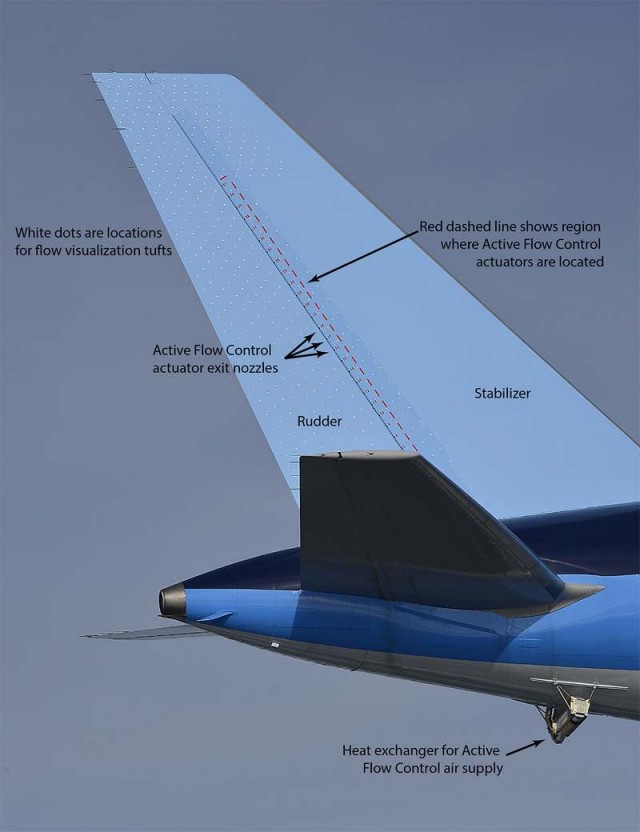 Technologies installed on the Boeing 757’s tail for the Active Flow Control experiment. Credit: Boeing / NASA
Technologies installed on the Boeing 757’s tail for the Active Flow Control experiment. Credit: Boeing / NASA
The first technology to be tested is called the Active Flow Control Enhanced Vertical Tail Flight Experiment. NASA worked with Boeing to install 31 tiny jets called sweeping jet actuators that can manipulate, on demand, the air that flows over the ecoDemonstrator 757’s vertical tail and rudder surfaces. An aircraft’s vertical tail is primarily used to add stability and directional control during takeoff and landing, especially in the event of an engine failure. But when the aircraft is cruising at altitude the same large, heavy tail is not necessary.
Engineers theorized they could reduce the size of the vertical tail by using the sweeping jets to generate the same side force during takeoff and landing that a larger tail does.
In another set of flight tests a few weeks later near Shreveport, Louisiana, NASA’s ERA project will assess how well five different coatings repel insect residue in an experiment called Insect Accretion and Mitigation. Bug remains may be a nuisance on cars, but on some airplane designs they are also a drag, quite literally. Studies have shown that keeping the flow smooth, called laminar, over a wing can reduce fuel consumption as much as six percent. Even something as small as a bug on a leading edge can cause turbulent wedges that interrupt laminar flow. That results in an increase in drag and fuel consumption.
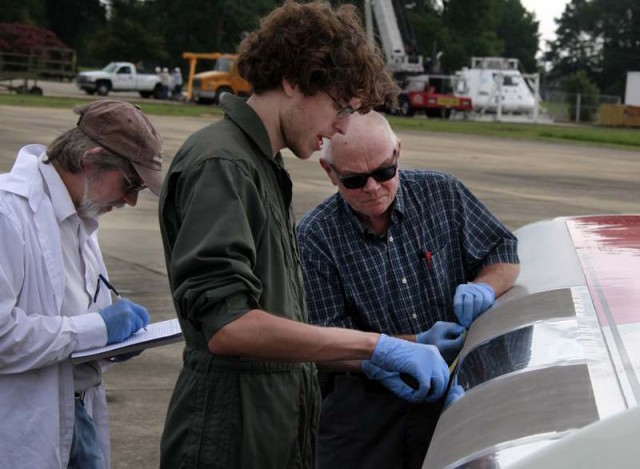 Researchers at NASA’s Langley Research Center check results following preliminary NASA flight tests of nonstick coatings. Credit: NASA Langley / David C. Bowman
Researchers at NASA’s Langley Research Center check results following preliminary NASA flight tests of nonstick coatings. Credit: NASA Langley / David C. Bowman
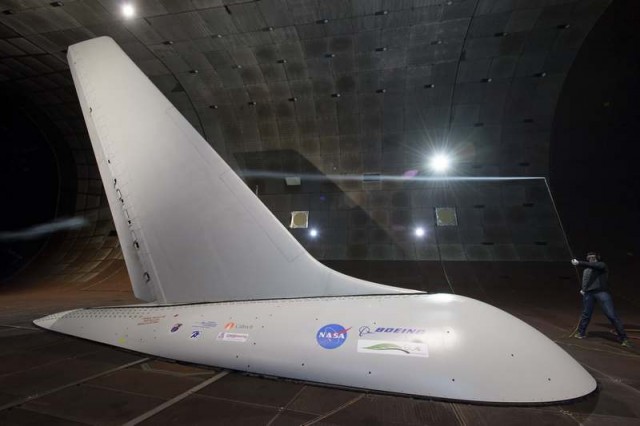 The Active Flow Control system tested on a full-sized tail in the National Full-Scale Aerodynamic Complex, a massive wind tunnel located at NASA’s Ames Research Center. Credit: NASA / Dominic Hart
The Active Flow Control system tested on a full-sized tail in the National Full-Scale Aerodynamic Complex, a massive wind tunnel located at NASA’s Ames Research Center. Credit: NASA / Dominic Hart
source NASA

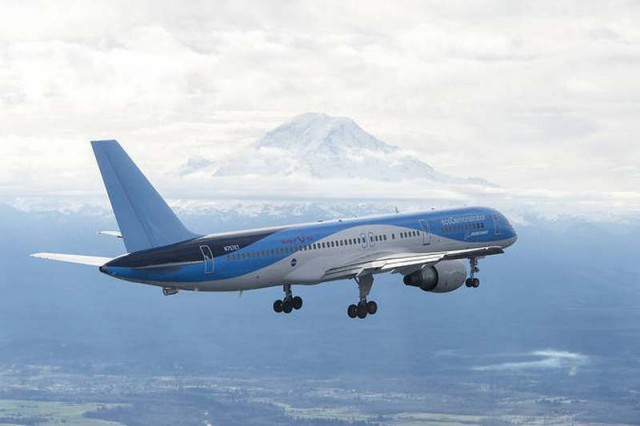
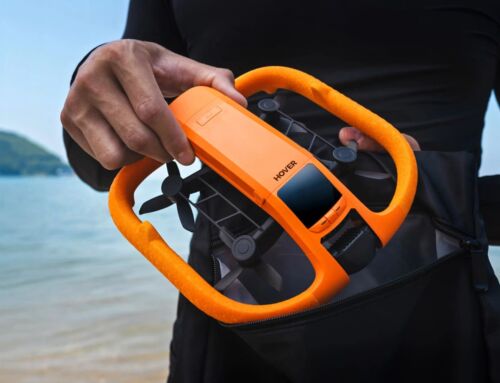
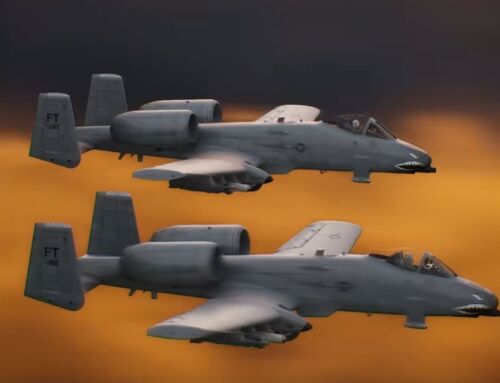
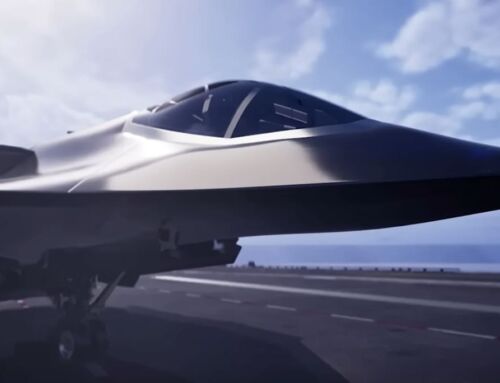
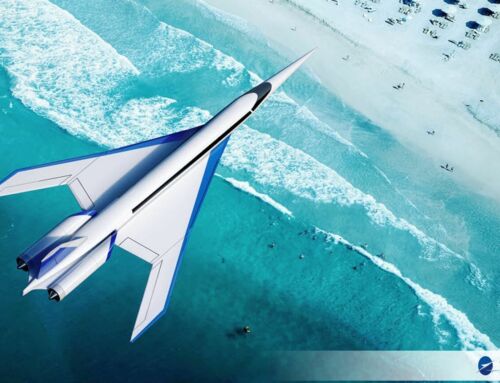
Leave A Comment